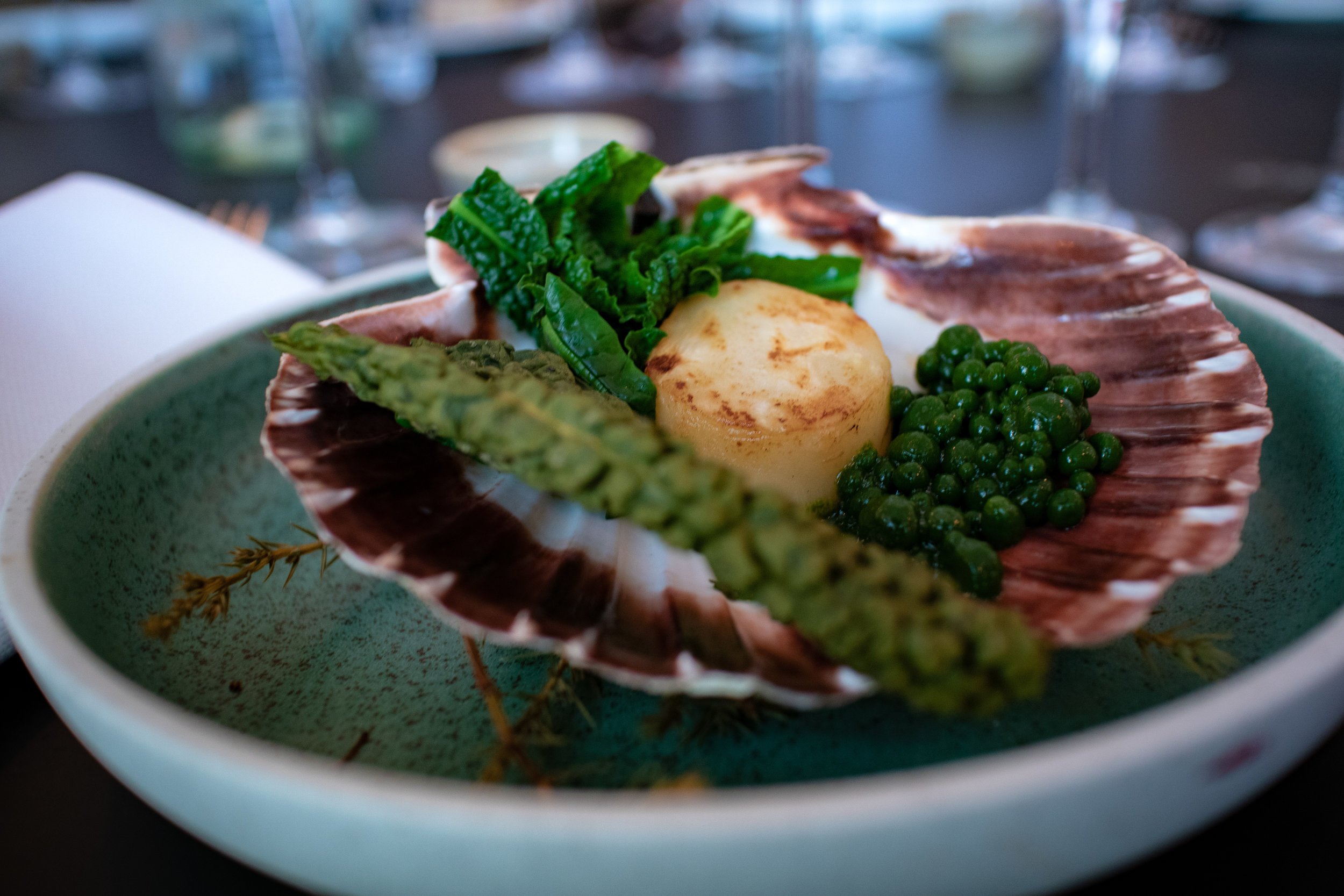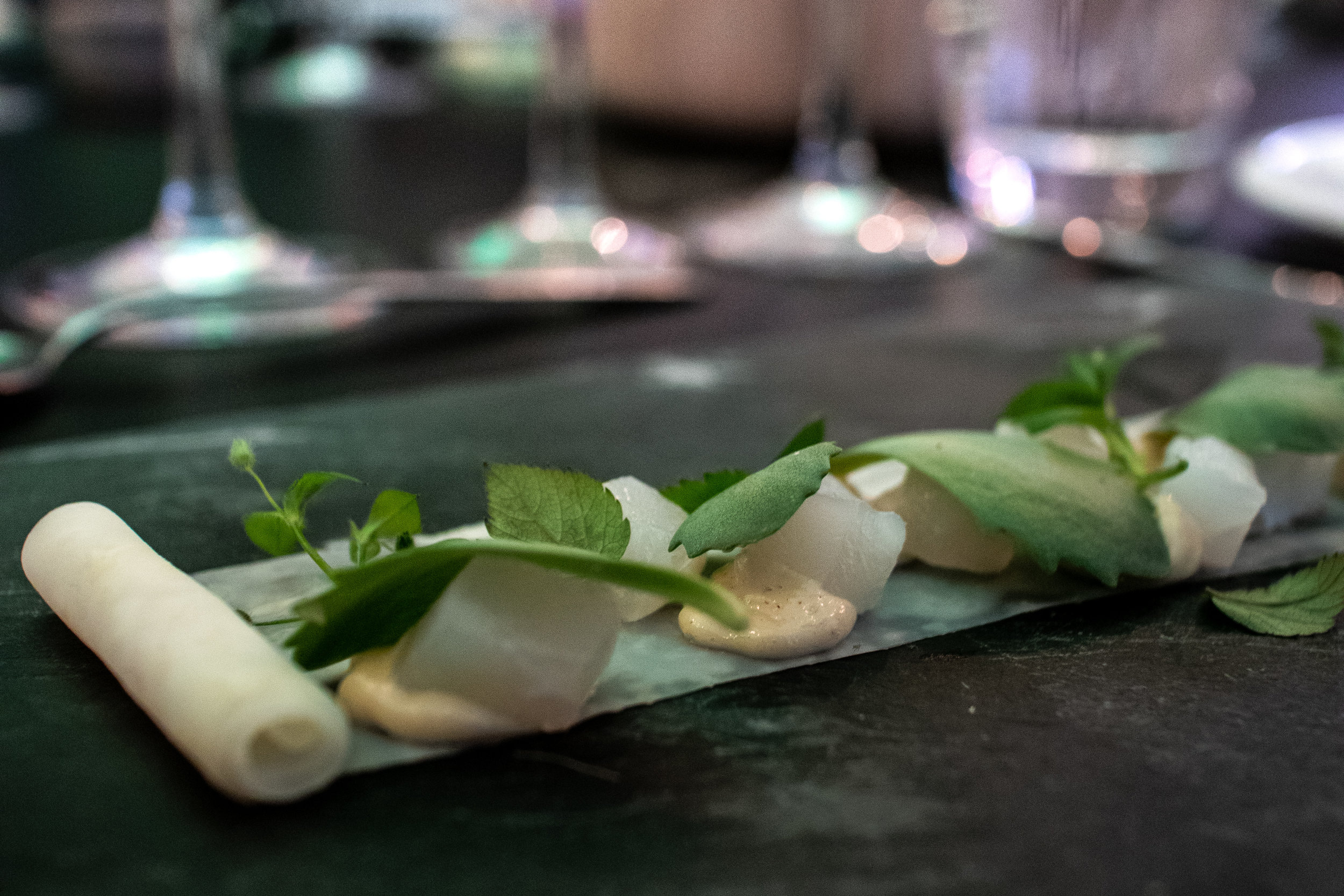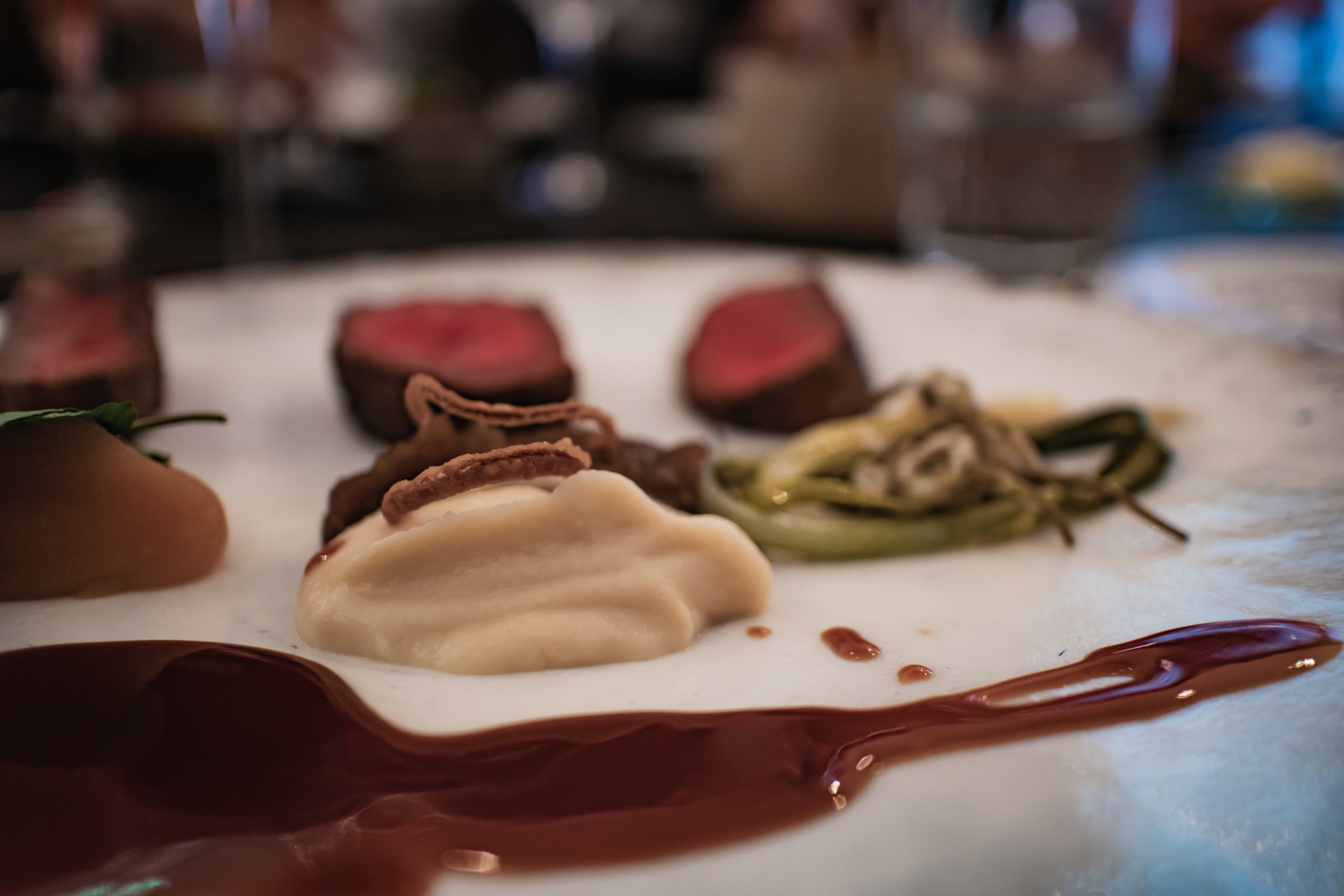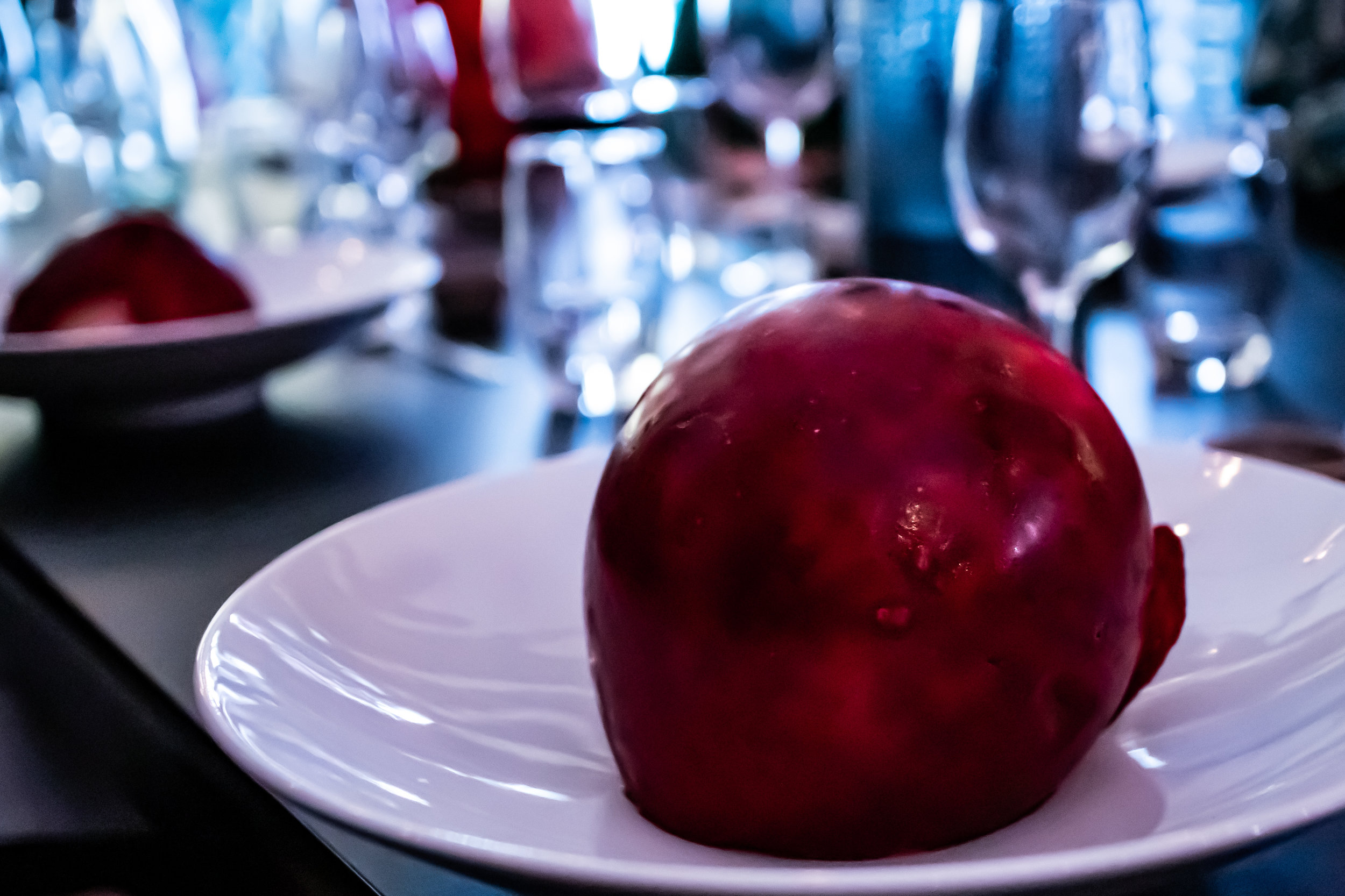ARoS Far from home multisensory dinner - 30 march 2019
The dinner came as a follow-up to the Eat with All Your Senses masterclass I delivered as part of the Michelin Nordic Guide celebration. Inspired by research from psychology and sensory science, we designed a multisensory dinner around the theme of “far from home”.
The dinner guests first enjoyed three bites while experiencing three art pieces which were part of the Far from Home exhibit.
Next, five courses were served in the museum restaurant. Each course emphasised the role of one particular sense on flavour perception, while the overall progression of the evening took the diners further from home. Each dish was served with an assortment of accompaniments including beverages, lighting, sound, and aroma. An excerpt of the background soundtrack is streamable under each course description.
Photo credit: Claus Frantzen
in the gallery
Prosjekt Gjerdeløa, 1980 – 2014, Marianne Heske
Two servings of caviar, imitation and real
Birds, Noelia Mora Solvez, 2018
Soft-boiled quail egg served in egg carton
House, Doug Aitken, 2010
Dehydrated mousse of chocolate, malt dirt and popping candy
course 1: vision
Roasted celeriac, fake roe and cabbage “seaweed”
Champagne, André Clouet, Grande Réserve, 100 % Pinot Noir
Soundtrack of the sea
As the Roman gourmand Apicius noted, “we eat first with our eyes”. This course is all about playing with our visual perception of food, from the celeriac made to look like scallops to the imitation caviar and seaweed. The illusion of seafood is enhanced with the background soundtrack taken from recordings of Tangkrogen beach, overlaid with the medieval Danish ode “In vernalis temporis” (played daily by the Aarhus city hall bell tower). Even the Champagne, which looks like white wine, is deceptive as it is produced from 100% red grapes!
course 2: smell
Smoked trout, celeriac and juniper
2018 ARoS snaps
Soundtrack of the forest
Dynamic green lighting
Besides contributing to food flavour, the smell of the food itself can bias our expectations about how the food will taste like. We introduce the smell of juniper into the dining room to enhance the forest atmosphere set up by the food, snaps, background music and lighting. The background soundtrack uses the same In vernalis temporis melody, overlaid on recorded sounds from Marselisborg forest.
course 3: taste
Dry-aged beef, three types of garnish
2014 Flor de Pingus, Domino De Pingus, Ribera Del Duero
Unnatural nature
This course showcases interactions between different flavours on the plate and in the glass. For instance, the salt level in the same cut of meat can seem different when paired with garnishes featuring sweetness, sourness, and bitterness. Furthermore, the fattiness of the meat softens the acidity and astringent tannins in the wine, making it taste fruitier and smoother than if the wine were tasted alone. The “unnatural” soundscape features a combination of diurnal and nocturnal animals, subtly signaling that we are indeed getting farther away from home.
course 4: sound
Rudy chocolate cream, celeriac ice-cream and aronia sphere
Ice soundtrack
Dimmed lighting
This course explores the influence of sound on the perception of texture and temperature. The lights are therefore dimmed to help us focus our attention on the non-visual senses. The sharp sounds of cracking ice sets the scene for the crunchy ruby chocolate sphere. The high pitched and fast melody enhances the coldness of the celeriac ice cream. We return once again to “In vernalis temporis”, albeit in a fantastical variation far away from the original.
course 5: touch
White chocolate mousse with nitro lemongrass merengue
Cydonia, Cold Hand Winery, Danish Quince wine
Fire soundtrack
Red-orange-yellow lighting
The final course focuses on the role of touch, both in terms of food texture, but also in terms of servingware. The wine is served in two different receptacles, a wine glass and a ceramic Sake cup, to show how the same drink – a Danish fruit wine - can seem familiar or different depending on the context in which it is served. The lighting and sound of a crackling fire suggests the comfort of a fireplace, while the music begins as a variation of “In vernalis temporis” but gradually returns home to the original melody.





